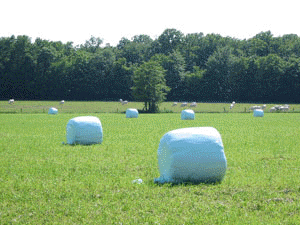Our herd is composed of about 400 head of charolais all registered in the Charolais Herd Book : 140 cows and their progeny. Our aim is to select the best charolais and to sell the best genetic bovines to other breeders. And we have been trying to do it since 1957 !!
Calving
The calving period takes place in winter. From December through April, it makes the supervision of the calving easier. And then when the cows come back to grass land in the spring, they draw profit from the rich grass which grows quickly and then feeds the animals perfectly.
Reproduction
Artificial insemination begins at the end of February, while natural insemination by bulls starts in March. The artificial insemination covers 15% of the livestock, with our private bulls or with bulls registered as “connectors” to allow the connection of our own bulls to the rest of the French bulls.
We select the animals which go or return to the reproduction on several criteria : development, maternal values, breed qualities, docility, blood line.
Control of performance
The growth control of sucking calves has been strictly followed up since 1972. All animals are checked a few times in their lives, particularly in their first year, so we can calculate 2 types of weights (4 and 7 months). Otherwise, all calves are measured and assessed according to a set of standard criteria such as muscular size, skeleton development and structural soundness.
.
Feeding
During the summer period, the herd consists of about 400 heads of cattle fed on 160 hectares (400 acres) of natural grazing land. During the winter season, the livestock is sheltered in a large free stall barn and is fed on fetter cornadis in generously covered straw areas. Otherwise the bulls and about 30 cows stay outdoors on the meadow.
In the winter, the daily ration is composed of a mix of hay, silage grass, straw, maize ensilage and cereal addition (maize, barley, wheat, oats and minerals). Quantity varies according to the age and the weight of the animals.
In the summer, free-range grazing prevails. In case of a very dry summer, the animals get grade B hay or good quality straw available in round ball packs. Starting from July, mother-sucking calves are also fed with cereal supply and first grade hay.
